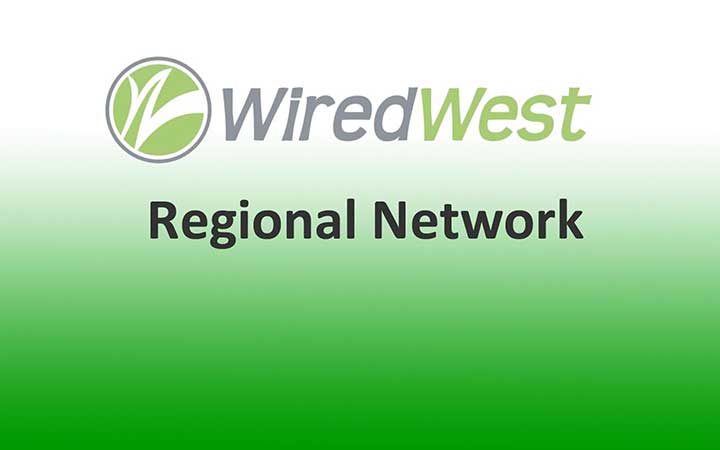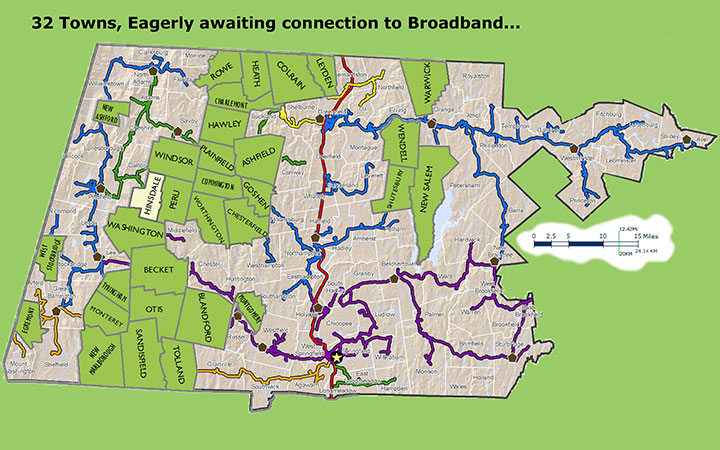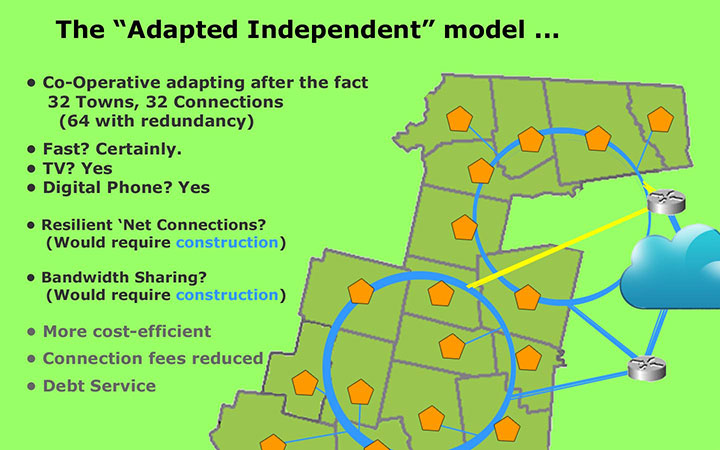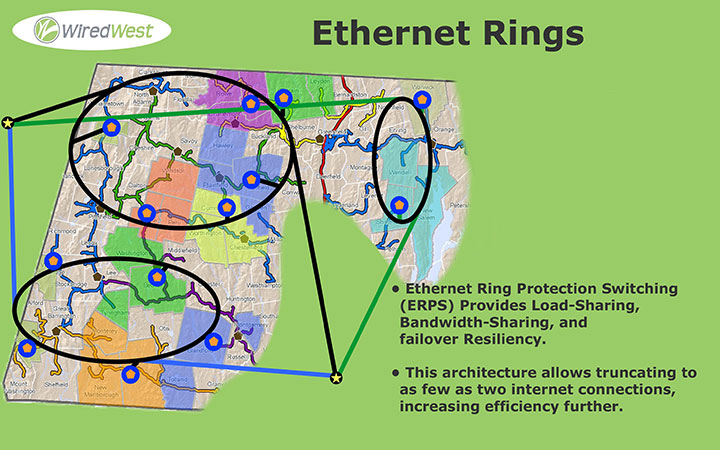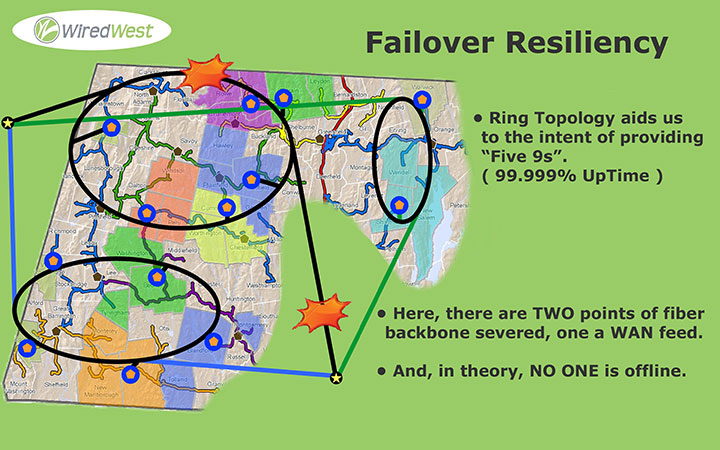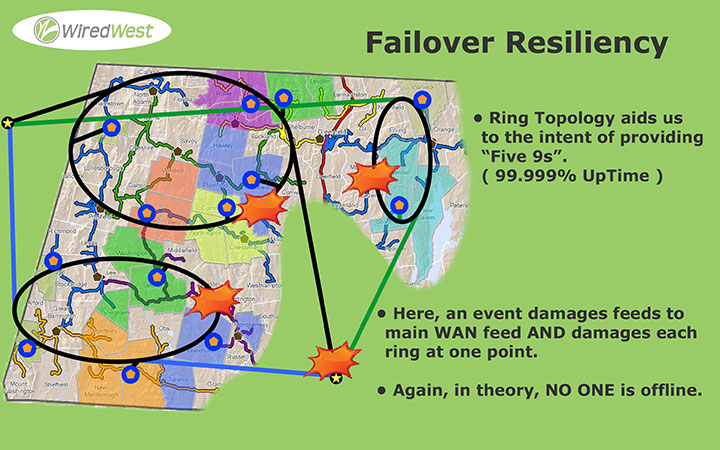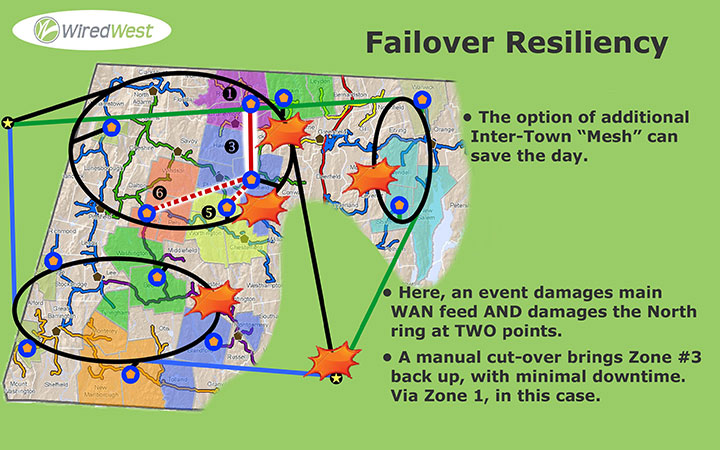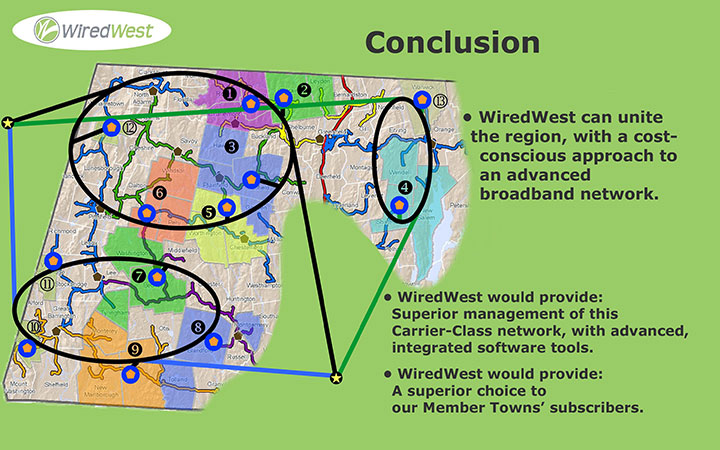Linking Networks to Form a Regional Network
This was the plan, but is now obsolete. The few towns remaining in WiredWest did not have enough adjacency to make it work. But WhipCityFiber, who WiredWest and many other hill towns hire as network operator and ISP, organized a similar shared backhaul plan, which they refer to as RRR: “Reliable, Redundant, Resilient” backhaul. The following is for historical reference.
—
Key to WiredWest’s plan is linking the networks that Towns individually build and own into a regionally operated network. We believe this will allow consolidation of costs and services resulting in ease of operation and lower subscriber costs. The technology exists to do this even if towns are not adjacent, though the greatest savings are achieved when they are. Using spare fiber that towns own as part of their network and possibly leased fiber, huts in each town can be linked. Proper choice of equipment and uniform design will facilitate this. Towns hoping to be part of a regionally operated network with WiredWest should choose the following as part of their network design:
- The OSP should be “fiber rich” with the standard recommended percentage of spare fibers to be 50% or more, depending on your town’s potential growth. Spare fibers may be used to connect to a regional network or for emergency services and future homes or subdivisions. 4 to 10 fiber strands should go to a mutually agreed upon border/demarcation/splice point(s) between each adjacent towns.
- Ethernet Ring Protection Switching (EPRS) or other possible protocols will be chosen to allow automatic failover resiliency. Towns must use compatible equipment (If appropriate: We want to fix the fact that some towns are on spurs of the Middle Mile with no redundancy and therefore vulnerable to outages should a single line goes down somewhere.)
Also see Backhaul and Edge Cases for more information.
To join the regional network, towns would need to contribute a relatively small amount of fiber and equipment needed to connect networks. WiredWest would own only the assets necessary to connect the networks, however towns will maintain ownership of their complete individual networks. Towns will therefore be responsible for debt service and contribution to depreciation reserves, however as part of the regional network, WiredWest would handle maintenance, network operations, ISP, and other services. WiredWest will hire contractors for these services, sparing the individual towns of having to procure them separately.
The network topology that we are considering would include a southern ring, a northern ring and possibly a Quabbin ring connected to the northern ring. Each ring would use G.8032 Ethernet Ring Protection Switching (ERPS). This allows for the automatic routing of data on the ring if the ring is broken so that nodes after the break can still receive data. The southern ring would be connected through an edge switch to two 20 gig circuits to Springfield and the northern ring would be connected to two 20 gig circuits to Albany. One of the Albany and one of the Springfield circuits would be active and the other a spare. In the event that the active circuit was disrupted, the spare circuit would be activated automatically using ERPS. The two rings would be interconnected so that in the event that both primary and alternate from either Albany or Springfield were disrupted then both rings could be fed from the remaining city albeit at 20 gigs for both rings rather than 20 gigs for each ring.
In addition to ring topology, the concept is to layer on mesh or fully connected network so that if a node (hut) became isolated by a break in the ring on either side of the hut, then the hut could be connected by a third path to another hut. The mesh or fully connected network would require a tech to manual connect the fiber in the isolated hut. The details of the network topology will depend on which towns participate.

